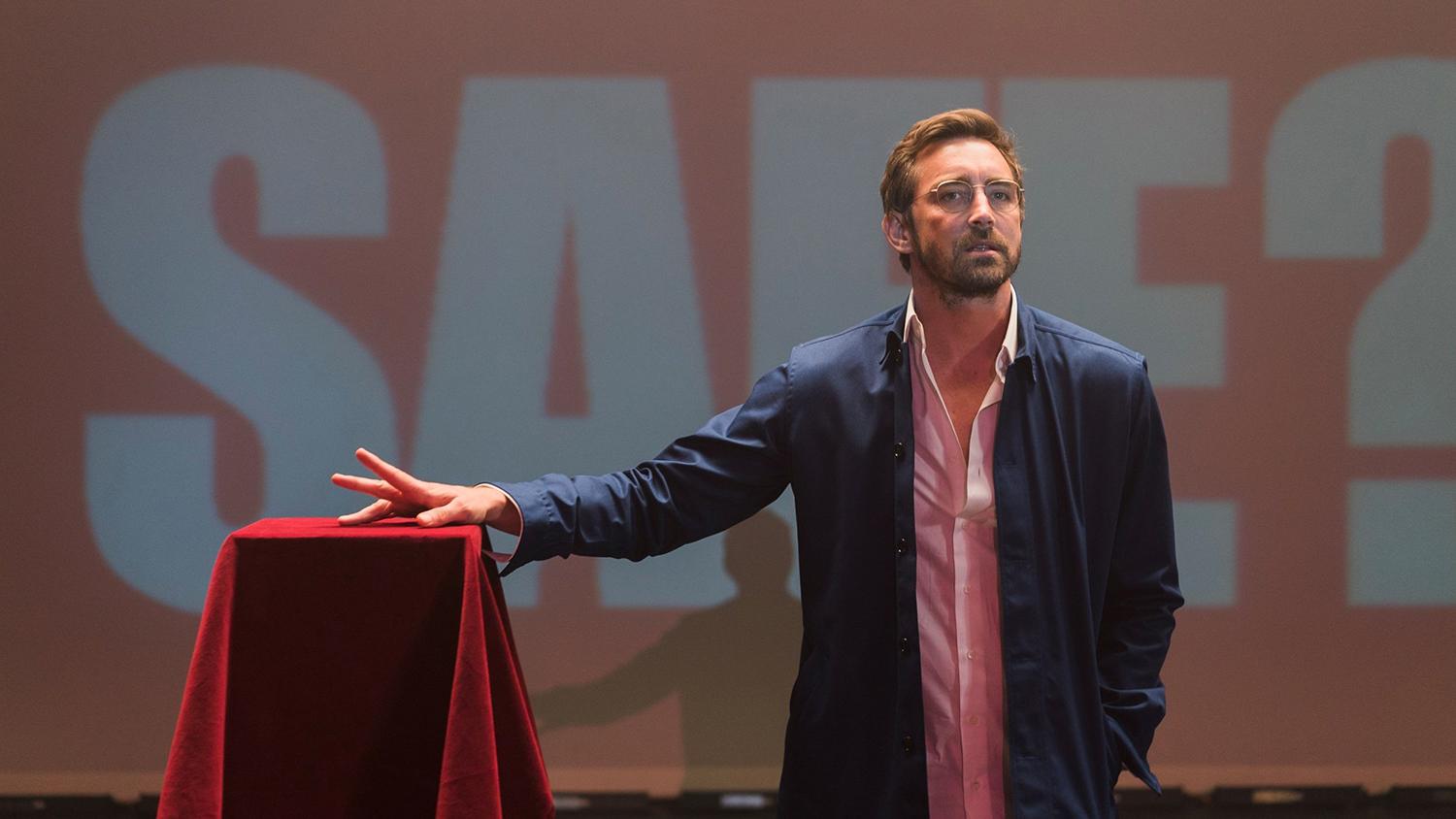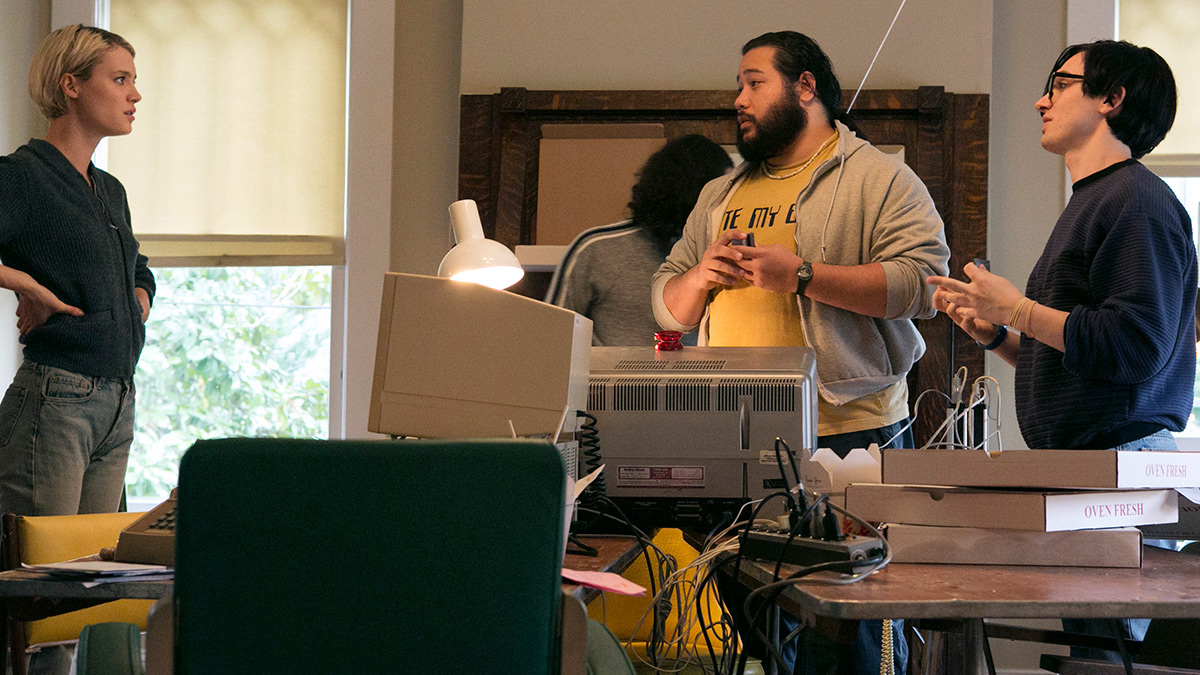You’ve probably seen AMC’s hit shows like the Breaking Bad and The Walking Dead, but if you haven’t been watching it’s lesser-known series Halt and Catch Fire, you’re missing out.
Season 3 of the critically-acclaimed show, which explored the rise of home PCs in season one and the origins of online communities and online gaming in season two, focuses on the birth of Silicon Valley.
While Chris Rogers and Chris Cantwell, co-creators of the show, have followed the career paths of central characters Joe MacMillan (Lee Pace), Gordon Clark (Scoot McNairy), Cameron Howe (Mackenzie Davis) and Donna Clark (Kerry Bishe) throughout it all, each season has explored a different part of the history of technology. The reboot of the show each season ties into the name, Halt and Catch Fire, which is a machine code instruction for the computer’s central processing unit to stop – essentially requiring a restart.
“The title of the show was something that Chris and I searched a long time for when we were writing the pilot,” Rogers told Digital Trends. “We didn’t know what to call this thing, but we came across this computer code that was applicable in the technology landscape. It was not only a nod to the past, but also something that just spoke to the emotional qualities of our characters. These people are so driven and have to move so quickly that they can’t stop. They’re really driven by their internal momentum and the moment they stop, they self-destruct.”
Cantwell said that this drive mirrors technology, which moves at such a breakneck pace, especially compared to other industries, that when you’re caught in the slipstream of that it can be quite a ride — one that’s exhilarating and also anxious.
“We wanted to tell the story of people who mattered in the cracks of history next to the giants of Microsoft and Apple that we still know.”
After being set mostly in Texas’ Silicon Prairie for the first two seasons, season three moves the show (which is actually filmed in Atlanta) to the San Francisco Bay area. Rogers said moving the show to California was inevitable, the longer it went on.
“We wanted to tell the story of people who mattered in the cracks of history next to the giants of Microsoft and Apple that we still know,” Rogers said. “By 1986, when our third season begins, Silicon Valley as we know it is really starting to heat up. That said, we really feel like the story of Silicon Valley is what people don’t know that well. The beginning of Sand Hill Road, the beginning of venture capital and what the valley was before the ‘.com’ and the big IPOs that we all know.”
While Mike Judge has been able to find the humor of the current landscape of excess and tech industry celebrity in HBO’s critical and commercial darling, Silicon Valley, Cantwell said Halt and Catch Fire takes a much more realistic (and darker) look at the origins of this tech mecca.
“This is Silicon Valley before the HBO show Silicon Valley, so we’re trying to show this moment where Microsoft is going public, where the culture of going public and selling your company and tech companies being these overnight sensations, and person as product and the celebrity of the Steve Jobs,” Cantwell said. “We want to show the origins of that, and tell you the story before the story that you know.”
Season 3 will explore multiple technological evolutions that occurred around 1986, including the dawn of the first-person shooter video game and the first try at e-tail, or ecommerce.
“What’s so beneficial about setting up this story about technology is that it’s not just any one person having a single idea, and then that person is declared the winner,” Cantwell said. “It really is various concepts that exist at the same time, and people groping around in the dark with certain ideas and trying things on in different ways. It’s not necessarily that the first that crosses the finish line is the best. It’s just the one coming at the right time, and reaching the right audience.”
The show also focuses on the rise of the IPO, which today is so commonplace it’s only when a huge company like Facebook or Twitter goes that route that most people follow.
Cantwell said this idea of building the company primarily to IPO is something that is very rooted in technology companies’ success in the past. But it wasn’t always like that.
“Reaching back to a time where it was more of a novel concept is a fun thing to explore with the history of the show,” Cantwell said. “It dawns on people that they could actually get a giant influx of cash and probably personally all make a lot of money – and that became a barometer for success. It’s something that we’re definitely going to be playing with in season 3.”
“Reaching back to a time where an IPO was more of a novel concept is a fun thing to explore with the history of the show. ”
HBO’s Silicon Valley has worked with real tech industry titans to appear in cameos in the series, which is something that Halt and Catch Fire will introduce in season 3.
“It’s a little harder for us to work cameos into our world, but we are starting to do that,” Rogers said. “There may be a little bit of that in season 3, and we’re certainly open to it in the future.”
One thing that Halt and Catch Fire has always done is integrate real companies and personalities into the mix, such as IBM in season one and Grace Hopper in season two. But the show creators also drew from real people to craft their central female characters. Cantwell said Dona Bailey, the co-creator of Centipede, was the inspiration for the Cameron and Donna characters.
Rogers said the great shame is that probably the most unrealistic thing about the show sometimes is that there are two females exceeding so much in a tech industry that is really stacked against them.
“It’s one of our little crusades to talk about how we got there, and to use the show to examine why there still is so much sexism in Silicon Valley, and why things like GamerGate happen and why it is harder for women to get funded on Sand Hill Road,” Rogers said. “That’s actually a huge and unintentional benefit of our show. We didn’t set out to tell that story, but actually think we can do good in the world by telling exactly what happened.”
Rogers noted that the levels of female enrollment in graduate programs for women in science, technology, engineering, and mathematics were higher in the ‘70s and ‘80s than they are today. He said the real reason for that is the way computers were marketed as “toys for boys,” and the idea that math and science should be a male-dominated field, and that women were probably better at the arts.
“That’s a real tragedy because there are a lot of women that contributed to being where we are today in technology,” Rogers said.
Cantwell said figures who were part of the history of the tech industry, including Michael Dell and Marc Andreessen, have reached out to them to tell them they got it right. That should pull a lot of weight for those who might be on the fence about watching the first 20 episodes, or the upcoming 10.
For those who haven’t watched this show yet, it’s great for binge watching. Season 3 premieres Aug. 23 at 9 PM (ET) on AMC.




